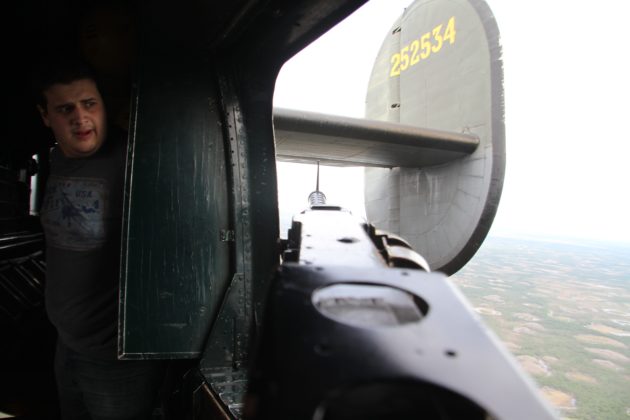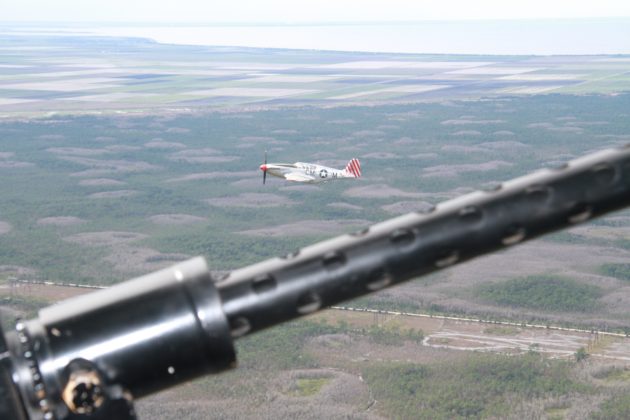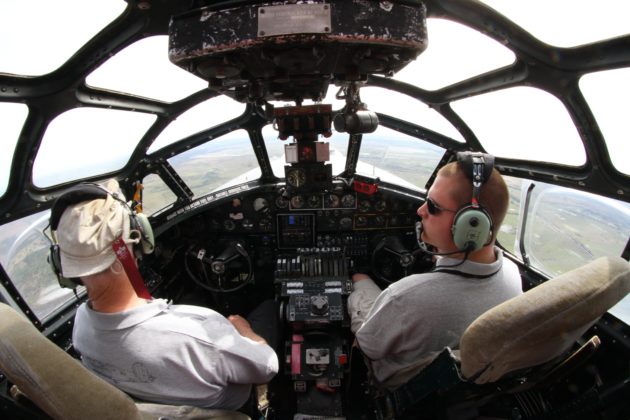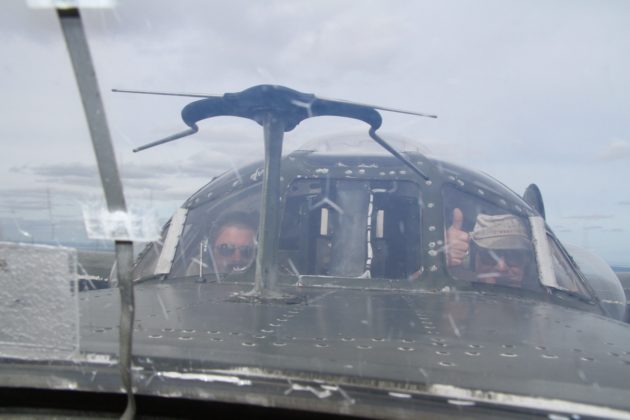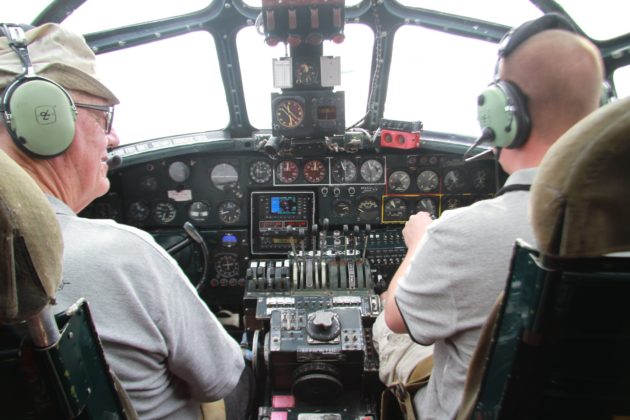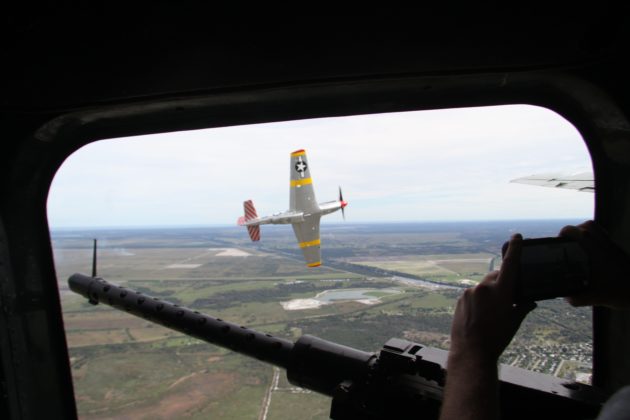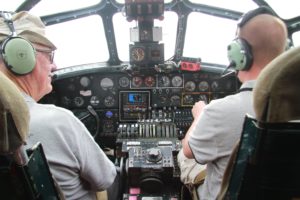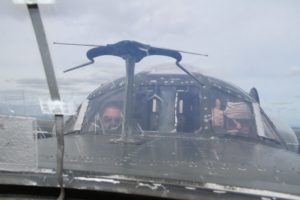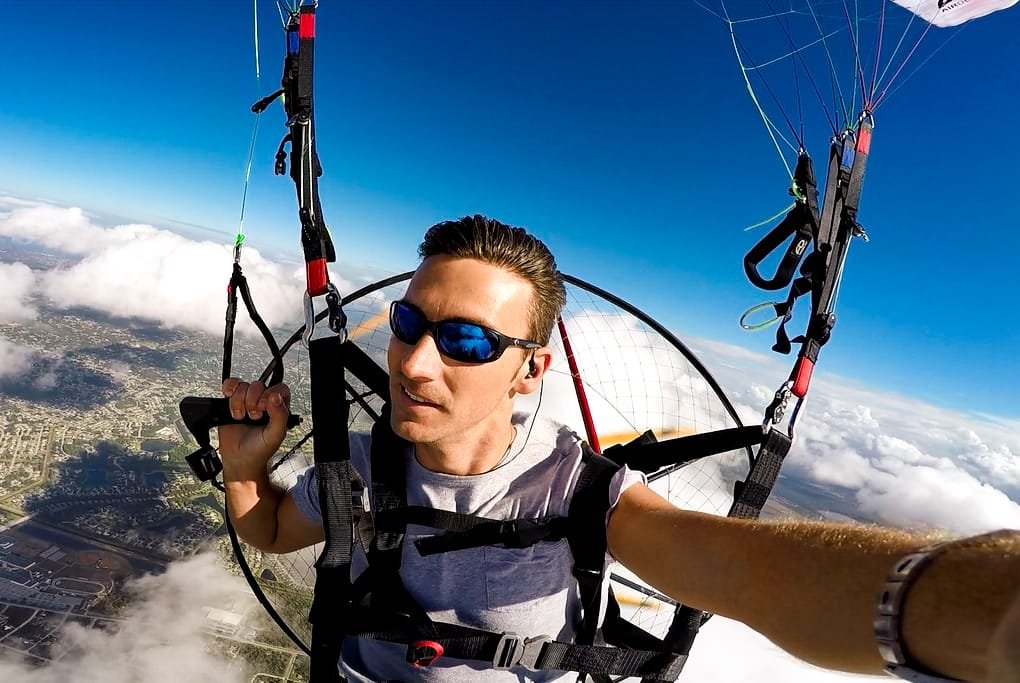Flying Coffin: I hope I don’t die in this plane
“Hell Yeah!” was all I could say when my friend Greg asked if I wanted to go for a ride in one of the most famous aircraft ever built, the B-24 Liberator. But shortly after my arrival at the airport, as I strapped into my primer-green metal “seat,” which positioned my head about 2 feet from a gigantic turbo-supercharged, 1,200 horse power radial engine spinning a huge three-bladed pro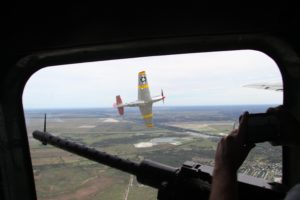
The liberator holds many records for being the most produced twin engine airplane, about 19,000 units. This is an incredible feat of Engineering. There are also a few other stats which are less likely to put a smile on your face and which brings me back to the original thought about dying while on this tiny piece of cold aluminum in primer-green. Depending upon which statistic you take, the loss rate for some strategic bomber groups was around 45% or more. That’s right, for every 100 men who flew, only 55 of them came home. This is the thought that raced in my head, as Greg gently pushed all four long power levers up for takeoff power and my first flight in a B-24 began.
There was no way I was ever going to hear again. My ear drums had just given up this whole, “hearing stuff” notion about the time those huge radials roared to life and we lumbered down the runway. There was only sharp popping sounds in my right ear as I sat just below and aft of the flight deck facing the tail section of the plane, staring at a sign that said something about proper bomb loading. More impressive than the sound of pop-rocks mixing with water in my ear, was the impact of the engines and props. It was a concussive force that you could literally feel in your organs. I will never forget it. Slowly, very slowly we accelerated on runway 9L at Melbourne International Airport. Greg pulled on the yoke, and up we went, again, very slowly. “How in the hell did this thing fly with an engine out and lots of bombs?” I wondered.
Soon, we were in the air, around 1000ft above the ground and cruising down the East Coast of Florida headed towards Ft. Lauderdale Executive airport. They opened the waist gunner window and I got up to take a peek around the airplane sometimes referred to as, “The Flying Coffin.”
As I walked down the bomb bay towards the .50 cal machine guns (of which there were usually 10 on a combat aircraft) I thought about how damn old I would have been compared to the crews of these planes. I would have been about 10 years senior to many of the 19 and 20 year olds who bravely manned these stations. They probably would have called me “Gramps” or “Old Guy.” At that point, I just resigned myself to the fact that there was going to be many humbling revelations in this flight and to enjoy them.
Once at the waist gunner position, I realized I could easily fall out of the damn thing. Not like, if I tripped and fell, No, I mean like the bottom of the window was below my waist and that if at any point I stumbled, I would simply fall out of the damn window. After mentally reminding myself to not fall out of the plane, I grabbed a .50 caliber machine gun, whose barrel was pointed aft, due to the wind rushing over its barrel and tried to move it around. It was very, very difficult to say the least. 130mph wind blazing down the gun meant that I had to exert a great deal of effort to even move the gun around and aim. Again, I imagined the men who actually had to do this. They were flying around 27,000ft in an unpressurized plane, at a temperature somewhere in the -20f through -50f range, breathing off of an oxygen mask all while getting shot by other planes, hit by flak, and trying to return fire themselves. I just lowered my head in reverence and reminded myself to not fall out.
On this flight, we were lucky enough to have a fighter escort and were joined by a lone P-51 Mustang. This plane is considered one of the best flying planes ever built and I was thrilled to see one swing by for a closer look.
Through the rest of the flight, I crawled around the plane in various stations and was continually stunned by how raw and unforgiving every mission must have been. As a pilot myself, I hoped I would be able to get a glimmer of an understanding as to what it must have been like to fly one of these planes. After my flight that day, I knew I would never be able to understand what it was like to fly one of these beasts, unless I had been there, over the skies of Germany myself.
The whole experience was humbling, especially having heard my grandfather talk about the bomber formations he saw when he was on the ground that, “seemed to go on forever.” It put a lot of things in perspective. I was extremely grateful for the experience and came away from it with many emotions, but most of all, there was a sense of reverence and admiration for the people involved with these airplanes. They accomplished so much despite incredible and devastating hardships. It made me realize how much is possible. And I also no longer complain to myself when I have to do a preflight inspection on a jet when it’s -20 and blowing snow in Montreal or in the Dakotas, cause, well, I don’t wanna be a whiney bitch. If they could manage to do 20 missions over Europe, I can at least have the dignity to do a thorough preflight inspection.
Joking aside, if you get a change to hop a ride in one of these planes, you need to do it. Also, there are two books I’ve read about the missions thee men flew. “ The Wild Blue: The Men and Boys Who Flew the B-24 Over Germany” and also “A Higher Call.” Both were incredible and inspirational reads.
Special thanks, to my friend Greg who spends a great deal of his time helping keep these planes as well as B-17 and a Corsair flying so that others can experience them! Hope you enjoyed it, go find one of these and get a ride!



